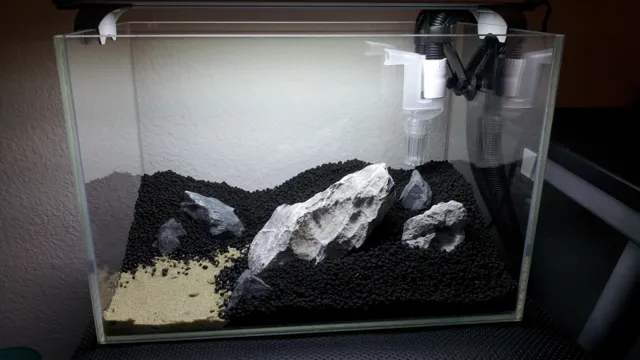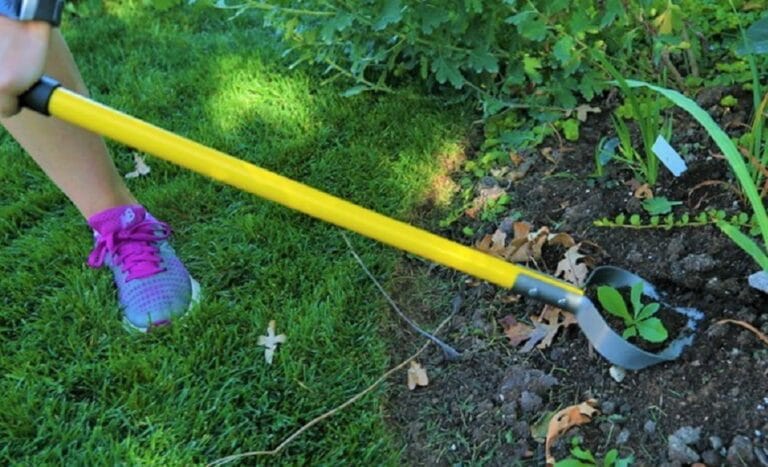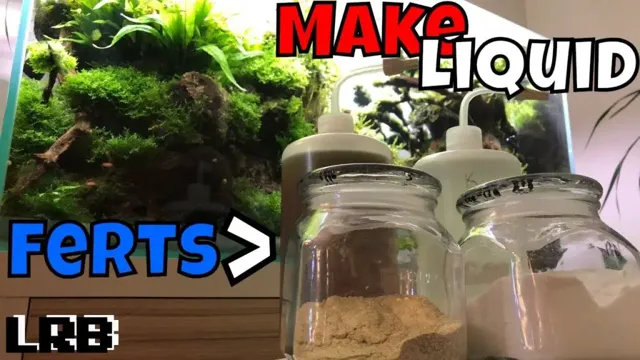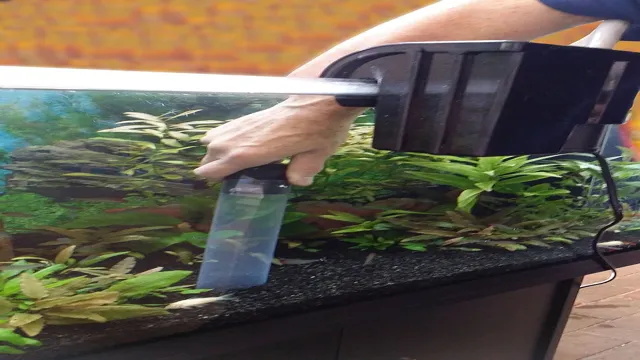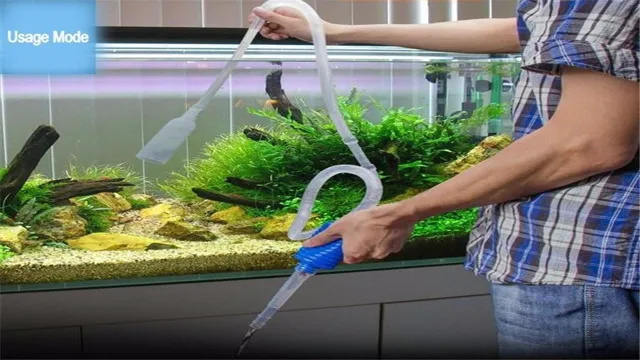How to Fertilize a Planted Aquarium: A Guide to Nutrient Balance and Healthy Growth
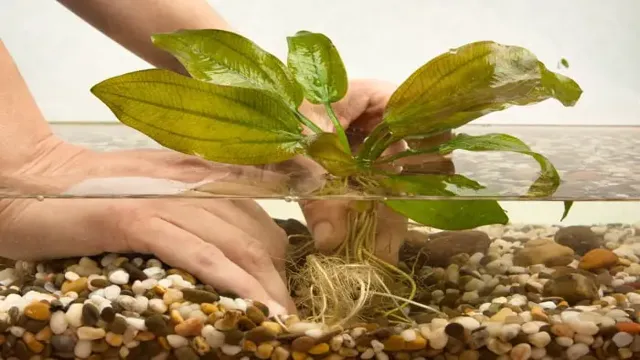
If you’re interested in maintaining a natural-looking and healthy planted aquarium, fertilizing is an essential factor to consider. In the wild, aquatic plants draw nutrients from their environment to survive. But in an indoor aquarium setting, it’s up to the fish tank owner to ensure a proper balance of essential nutrients that promote plant growth and development.
Fertilizers for planted aquariums are formulated to contain essential nutrients such as nitrogen, phosphorus, potassium, and trace elements that contribute to plant growth, leaf development, and coloration. Without these nutrients, plants can turn yellow or brown, wither away, and ultimately die. But how do you know which type of fertilizer to use and how much to apply? And what are the best practices for safe and effective fertilization without compromising the health of your fish and other aquatic life? In this blog, we’ll delve into the world of fertilizing a planted aquarium, covering everything from the importance of choosing the right fertilizer and dosage, to common mistakes to avoid, and tips for maintaining a healthy and thriving aquatic ecosystem in your home.
So, let’s dive in!
Understanding the Needs of Your Plants
If you want to keep your planted aquarium healthy and thriving, it’s important to understand the needs of your plants when it comes to fertilization. Fertilizing your aquarium with the right amount and type of nutrients can help your plants grow faster, stronger, and more vibrant. There are several factors to consider when deciding how to fertilize your planted aquarium, such as the type of plants you have, the type of substrate you’re using, and the amount of lighting your aquarium receives.
Generally, it’s recommended to use a liquid fertilizer that provides a balance of macronutrients and micronutrients. You should also test the water regularly to ensure that the nutrient levels are balanced and to avoid over-fertilization, which can lead to algae growth and other issues. With a little bit of research and experimentation, you can find the right fertilization routine to keep your planted aquarium looking beautiful and healthy.
Research Your Plant Species
When it comes to gardening, understanding the needs of your plants is key to their success. Every species has unique requirements, including light exposure, water intake, and soil type. That’s why it’s important to research the plant species you plan to grow and tailor your care approach to their specific needs.
Some plants, like succulents, require infrequent watering and lots of sunlight, while others, like ferns, prefer shady and humid conditions. By taking the time to research your specific plants, you can ensure that they receive the right amount of care and thrive in your garden. Remember, plants are living beings too, and deserve the proper care and attention for optimal growth and health.
So, do your research and give your plants the best chance at success.
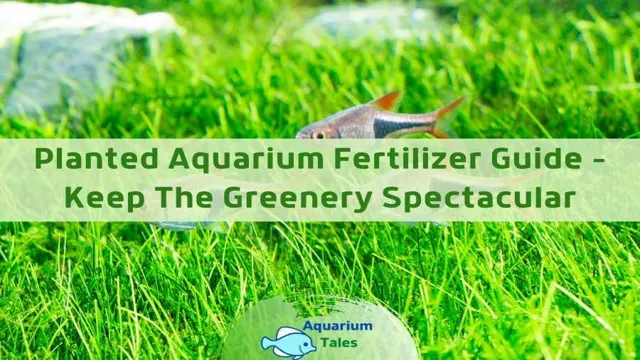
Provide Proper Lighting
When it comes to indoor gardening, providing proper lighting is crucial to promoting healthy plant growth. But understanding the needs of your specific plants is equally important. Different plants require different levels and types of light, so it’s essential to do your research and choose the right type of light source.
For example, some plants require full sun while others prefer partial shade. Additionally, consider the amount of sunlight your home receives and supplement with artificial lighting as needed. When selecting artificial lights, consider the color temperature and intensity of the bulbs.
Plants typically need a mix of cool and warm lighting to thrive. By investing in the right lighting for your indoor garden, you’ll be able to keep your plants happy and healthy, no matter the season.
Monitor CO2 Levels
If you’re an indoor gardener, you know that plants have specific needs. And as every plant owner knows, monitoring your plants’ CO2 levels is crucial to their growth. Understanding the needs of your plants isn’t always straightforward.
You have to consider factors like humidity, temperature, and lighting. But CO2 levels are just as vital as these other factors, if not more so. CO2 levels affect how well your plants can photosynthesize and produce food.
Inadequate CO2 levels can result in stunted growth, a weakened immune system, and even death. That’s why it’s important to regularly monitor and maintain optimal CO2 levels in your indoor garden. By keeping a watchful eye on your plants’ CO2 levels and adjusting them as needed, you’ll be able to provide your plants with the best possible environment for them to flourish.
Choosing the Right Fertilizer
When it comes to fertilizing a planted aquarium, choosing the right fertilizer is crucial for the health and growth of your aquatic plants. Two types of fertilizers commonly used in planted aquariums are liquid and substrate fertilizers. Liquid fertilizers are easy to use by simply adding them to the water, but they need to be added regularly since they get diluted quickly.
On the other hand, substrate fertilizers are placed directly into the substrate, providing long-term nutrient release. The type of fertilizer you use will depend on the specific needs of your aquatic plants and the overall setup of your planted aquarium. Additionally, make sure to choose a fertilizer that is specifically formulated for aquatic plants, as using regular plant fertilizer can harm your fish and other aquatic life.
With the right fertilizer and proper application, your aquatic plants will thrive, adding beautiful life to your aquarium.
Types of Fertilizers
Choosing the right fertilizer can be a daunting task, as there are various types of fertilizers available in the market. Organic fertilizers, for instance, are made from decaying animal or plant materials, and they are environment-friendly. They are broken down slowly and release nutrients gradually, which provide long-lasting effects on plants.
On the other hand, inorganic fertilizers are made from synthetic chemicals that are processed and refined. They are used by many farmers worldwide, as they are easy to find and can quickly provide nutrients to the plants. However, inorganic fertilizers can have negative impacts on the environment and can damage soil fertility.
Therefore, selecting the right type of fertilizer really depends on your garden’s needs and your values around environmental sustainability. By doing some research, you could find the right fertilizer that works perfectly for your plants without causing harm to nature.
Consider Your Tank’s Bioload
When it comes to keeping a well-maintained aquarium, fertilizer is an important factor to consider. But not all fertilizers are created equal, and choosing the right one for your tank’s bioload is essential. The bioload refers to the amount of fish, plants, and other organisms in the tank, and it determines the amount of waste produced.
The more bioload in your tank, the more nutrients your plants need to thrive. It is important to choose a fertilizer that contains all the necessary nutrients, including nitrogen, potassium, and phosphorus, but also one that won’t overpower your tank’s delicate ecosystem. A good fertilizer should be formulated to release nutrients gradually, ensuring that your plants get a steady supply without causing excessive algae growth or other imbalances.
By taking the time to choose the right fertilizer for your tank’s bioload, you can help ensure that your aquarium stays healthy and thriving for years to come.
Frequency of Application
When it comes to choosing the right fertilizer for your plants, one of the most important factors to consider is the frequency of application. Some fertilizers are designed to be applied once a season, while others should be used on a more frequent basis. It’s important to read the instructions carefully and understand the needs of your plants before making a decision.
Remember, over-fertilizing can be just as harmful as under-fertilizing. Finding the right balance is key to ensuring healthy growth and strong yields. So, take the time to research your options and choose a fertilizer that fits your specific needs.
With the right approach, you’ll be able to keep your plants thriving and flourishing throughout the growing season.
Applying Fertilizers
When it comes to fertilizing a planted aquarium, there are a few things you need to keep in mind. First and foremost, you want to make sure you’re using a fertilizer that’s specifically formulated for aquatic plants. Look for one that provides a balance of macro and micronutrients, including nitrogen, phosphorus, potassium, iron, and magnesium.
You can add the fertilizer directly to the water, or you can bury it in the substrate around your plants. Just be sure to follow the manufacturer’s instructions carefully, as over-fertilizing can lead to algae growth and other issues. Additionally, consider adding CO2 to your tank to help your plants thrive.
With the right care and attention, you can create a beautiful and thriving planted aquarium that will bring joy and beauty to your home or office.
Follow Instructions on Fertilizer Package
When it comes to applying fertilizers, it’s essential to follow the instructions on the package to ensure that your plants get the nutrients they need without getting burned. Each type of fertilizer has a different composition, and over-fertilizing can do more harm than good. Understanding the NPK (nitrogen, phosphorus, and potassium) ratio is crucial in making decisions on application rates.
The package will also include information on when and how to apply the fertilizer. Generally, it’s best to apply in the early morning or late afternoon and to water afterward to help the nutrients penetrate the soil. Be sure not to apply too close to the plant’s stem or leaves, as this can also cause damage.
Remember, too much of a good thing is never a good thing, so always follow the instructions on the package to avoid any accidental plant fatalities.
Avoid Overfertilizing
When it comes to applying fertilizers, it’s important to take a measured approach. Overfertilizing can do more harm than good to your plants, and it’s easy to accidentally apply too much. Too much fertilizer can lead to burnt leaves and even death of the plant.
It’s best to follow the instructions on the fertilizer package and not exceed the recommended amount. If you’re unsure, start with a small amount and assess how your plants respond. Another thing to keep in mind is that different plants have different fertilizing needs.
Vegetables and fruits plants need higher amounts of nitrogen and phosphorus than flowering plants. The timing of fertilization is also important, as applying fertilizers at the wrong time can be detrimental to the plant’s health. In short, be cautious when applying fertilizers to your plants, and follow the instructions carefully to avoid overfertilizing.
Your plants will thank you for it in the long run.
Maintaining a Healthy Aquatic Environment
Maintaining a healthy aquatic environment can be quite challenging, especially if you have a planted aquarium. Knowing how to fertilize your aquarium plants properly can make all the difference in ensuring a thriving ecosystem. The proper fertilization schedule can encourage healthy root growth and stimulate foliage development.
Typically, fertilizers come in the form of liquid or pellets and contain essential nutrients like nitrogen, potassium and phosphorus. However, it’s important to remember that it’s easy to over-fertilize, so it’s essential to avoid adding too much fertilizer. Regular water changes and proper aquatic maintenance are vital to the overall health of your aquarium plants and can help reduce the risk of algae growth.
Remember, to maintain the perfect aquatic environment, consistency is key and finding the right balance may take some trial and error.
Regular Water Changes
Regular Water Changes are essential for maintaining a healthy aquatic environment. It is necessary to change roughly 25% to 50% of the water in your aquarium every two weeks or so. Doing so helps to get rid of waste, toxins, and other harmful substances that tend to accumulate in the water over time.
Additionally, water changes also replenish important nutrients and minerals necessary for the growth and well-being of your aquatic inhabitants. Neglecting to change the water can cause the water quality to deteriorate rapidly, leading to the growth of algae and possibly even harming your aquatic pets. Regular water changes are an easy and effective way to maintain a healthy aquarium environment.
So, don’t forget to schedule routine water changes to keep your aquarium clean and your aquatic pets healthy.
Proper Filtration
Proper filtration is essential to maintaining a healthy aquatic environment for your fish and other aquatic life. It’s like having a vacuum cleaner for your fish tank. Ensuring that your tank is equipped with the proper filtration system keeps your water clean and clear, removing unwanted debris, toxins, and harmful bacteria.
Without proper filtration, aquarium water can quickly become clouded, creating an unhealthy environment for your aquatic pets. Not only does filtration remove impurities from the water, but it also increases oxygen levels necessary for your fish to thrive. When choosing a filter for your aquarium, be sure to consider the size of your tank and the types of aquatic life you have.
A high-quality filtration system will be essential for keeping your aquarium clean and healthy, ensuring your fish and other aquatic life have a safe environment to call home. So, remember, it’s not just about keeping the tank looking good; it’s about ensuring the health and well-being of your aquatic pets.
Monitoring Water Parameters
Maintaining the perfect environment for your aquatic creatures can be a challenging task, but it’s essential to ensure the well-being and prosperity of your fish and plants. Monitoring water parameters is a vital aspect of maintaining a healthy aquatic environment. Keeping track of the water temperature, salinity, pH level, and chemical balance is crucial for the survival of your aquatic pets.
The water temperature should be consistent and appropriate for the specific species you are nurturing. The salinity, pH level, and chemical balance of the water should be monitored regularly to prevent the growth of harmful bacteria, algae and to ensure a healthy environment for your fish and plants. Monitoring water parameters is essential to prevent any complications that could be life-threatening to your creatures.
By maintaining the water parameters, you can ensure optimum conditions for your aquatic pets to thrive and flourish.
Trimming and Pruning Plants
Maintaining a healthy aquatic environment involves keeping the plants in your aquarium in good condition. Trimming and pruning plants are essential tasks that play a crucial role in the overall health of your aquatic ecosystem. Trimming helps to remove any dead or decaying plant matter, which can cause harmful bacteria to spread, leading to diseases that can infect your fish.
Pruning helps to control the growth of your plants and prevent them from overrunning your aquarium space. It also ensures that your plants receive adequate nutrients and light to grow healthily. When pruning, ensure to cut the stems at an angle to allow for easy regrowth and prevent damage to your plant.
Remember, keeping your plants healthy is essential to maintaining the overall well-being of your aquatic environment.
Conclusion
There you have it, folks! Fertilizing your planted aquarium isn’t rocket science – just a little bit of knowledge, some trial and error, and a lot of love for your aquatic friends. By choosing the right fertilizers, understanding your plants’ needs, and giving them the right amount of TLC, you’ll be able to grow a stunning aquatic garden that will make all your finned friends smile. So go ahead, take the plunge – your fish (and your guests) will thank you for it!”
FAQs
What type of fertilizer is best for a planted aquarium?
The best type of fertilizer for a planted aquarium is one that contains all essential nutrients for plant growth, including nitrogen, phosphorus, and potassium. Look for fertilizers specifically designed for aquariums.
How often should I fertilize my planted aquarium?
It depends on the type of plants, the amount of light, and the fish load. Generally, it’s recommended to fertilize once or twice a week, but you should monitor your plants and adjust accordingly.
Can I use regular garden fertilizer in my planted aquarium?
No, regular garden fertilizer contains high levels of ammonia and other chemicals that can harm your fish and plants. Always use fertilizers specifically designed for aquariums.
Is it necessary to add CO2 to a planted aquarium when fertilizing?
Adding CO2 can greatly enhance plant growth, but it’s not always necessary. If your plants are growing well without CO2, then there’s no need to add it. However, if you have high light and lots of plants, adding CO2 can help support their growth.
How do I avoid algae growth when fertilizing my planted aquarium?
Algae growth is usually caused by an imbalance of nutrients or too much light. To avoid algae, make sure you’re fertilizing appropriately and not overfeeding your fish. Also, consider reducing the amount of light or the duration of light in your aquarium.
Can I fertilize only a section of my planted aquarium?
Yes, if you have different types of plants with different nutrient requirements, you can fertilize specific areas to meet their needs. However, it’s important to keep in mind the overall needs of your aquarium and adjust accordingly.
How do I know if my fertilizer is working in my planted aquarium?
You should see an improvement in plant growth and color after fertilizing. If you don’t see any changes, you may need to adjust your fertilization routine or check your water parameters to ensure proper nutrient levels.

